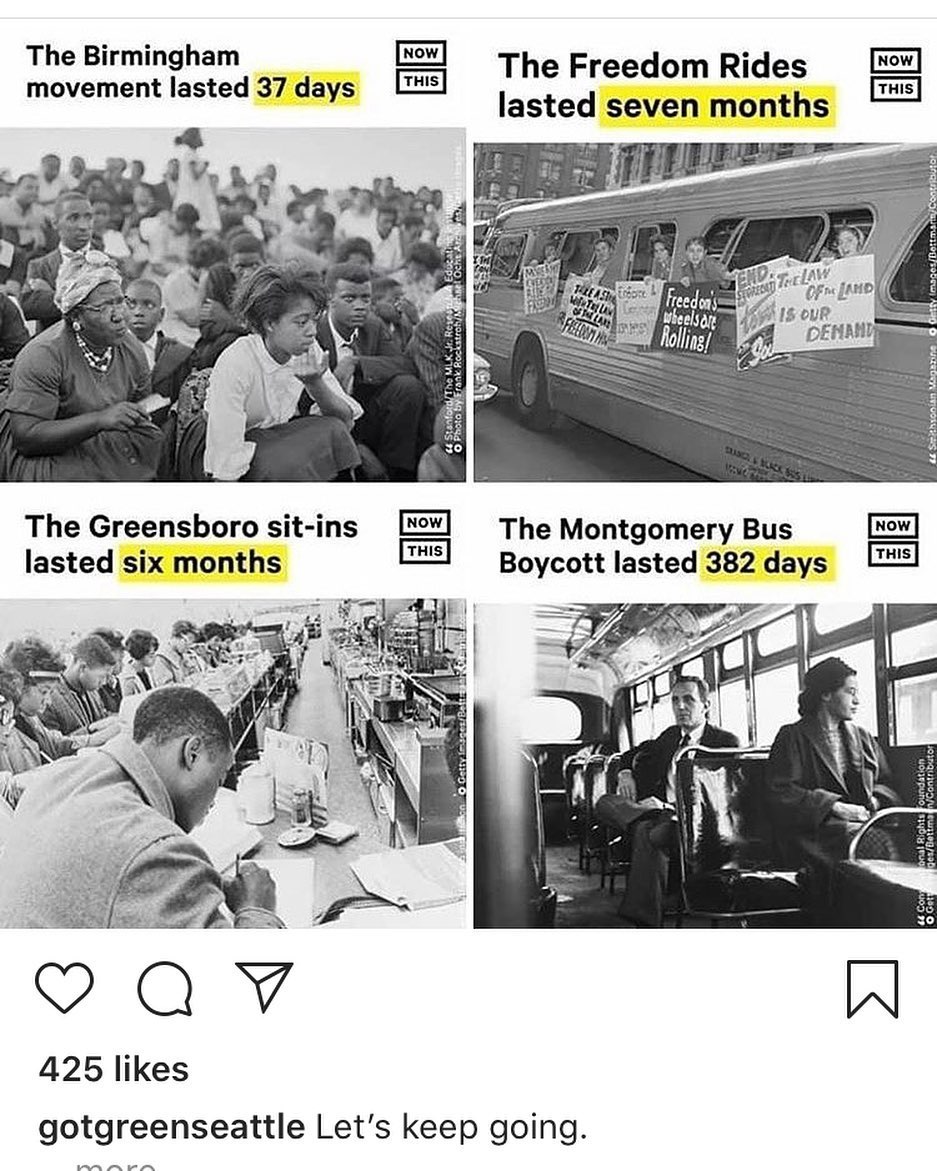|
For this week’s Peace of History:
Fifty-six years ago today, the US Civil Rights Act of 1964 became law. This landmark legislation outlawed discrimination based on race, color, religion, sex, or national origin; enforced the equal application of voter registration requirements; and prohibited racial segregation in schools, employment, and public accommodations -- signaling an end to the Jim Crow era in the Southern United States. Most of us know the basic touchstones: Rosa Parks, Dr. King, lunch counters and buses, marches and hoses, “I have a dream…” But those are the singular, dramatic, snapshot moments we know from photos, transcripts, and mythology -- compressing a long and still-unfinished movement into a mythical long-ago. As we look around today, with a catastrophically mismanaged pandemic, a looming financial collapse, and decades of racist police brutality and incarceration serving as the backdrop of the beginning of a new social justice uprising -- it is easy to lose a sense of how much time and work it takes to achieve justice. Social movements can last for years, even decades, and are composed of several interrelated campaigns, one often inspired by another. Campaigns have specific goals, and achieving those goals can take weeks or months of sustained effort -- and all that takes organizing and time. About three weeks ago, Instagram user gotgreenseattle posted an image reminding us of that fact. Let us meditate on how long these famous historical campaigns lasted, and what it might have been like to be in the participants’ shoes:
At this moment, we are writing a new chapter in the history of civil rights in this country. After Rosa Parks’ arrest in 1955, people across the country were inspired to participate in direct action campaigns for racial justice for the next 9 years and beyond, forcing the conscience of the country to face its racist reality and getting the Civil Rights Act of 1964 passed. Similarly, activists across the country have been pulling down or forcing the removal of racist statues from public areas in the wake of the George Floyd protests -- after years of debate, there’s been a tidal shift, and now statues are coming down left and right. Things seem to be happening so quickly these days -- and in a sense, they are. But if we want this movement to go beyond mere symbols, we must organize and press on with more campaigns and more demands. The time for sign-waving protest is drawing to a close; it is time to learn, organize, and take action. NOTE: On June 15, 2020, the US Supreme Court ruled that the Civil Rights Act of 1964 protection against workplace discrimination based on sex also applies to gay and transgender workers. This decision was announced days after President Trump announced the removal of nondiscrimination protections for trans and gender nonbinary people with regards to healthcare and health insurance -- in the middle of a pandemic. The only way to protect trans, nonbinary, and all vulnerable people is to organize, take action together, and strap in for the long haul. Sources: “Birmingham Campaign” https://kinginstitute.stanford.edu/encyclopedia/birmingham-campaign “Civil Rights Law Protects Gay and Transgender Workers, Supreme Court Rules” https://www.nytimes.com/2020/06/15/us/gay-transgender-workers-supreme-court.html “CORE Volunteers put their lives on the Road” http://www.core-online.org/History/freedom%20rides.htm “Freedom Rides” https://kinginstitute.stanford.edu/encyclopedia/freedom-rides “Montgomery Bus Boycott” https://kinginstitute.stanford.edu/encyclopedia/montgomery-bus-boycott “Sit-ins” https://kinginstitute.stanford.edu/encyclopedia/sit-ins “Transgender Health Protections Reversed By Trump Administration” https://www.npr.org/sections/health-shots/2020/06/12/868073068/transgender-health-protections-reversed-by-trump-administration Comments are closed.
|
AuthorWrite something about yourself. No need to be fancy, just an overview. Archives
March 2023
Categories |

 RSS Feed
RSS Feed